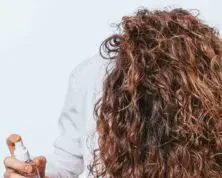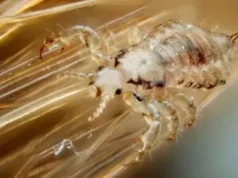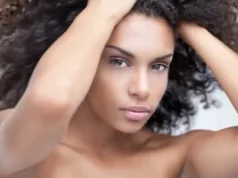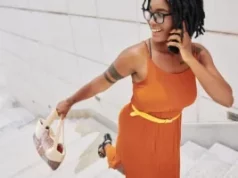How soon can you use purple shampoo after bleaching is a legitimate question that will cross your thoughts if you’ve just obtained a brand-new platinum blonde hairstyle. After all, maintaining a platinum hair colour requires avoiding brassy or butterfly tones.
Thankfully, purple shampoo was created specifically for this purpose, and once you understand how to use it, you’ll be able to retain your salon-quality hair for a longer period of time.
How Soon Can I Use Purple Shampoo After Bleaching?
After bleaching your hair, it’s generally recommended to wait at least 48 to 72 hours before using purple shampoo. This waiting period allows your hair and scalp to recover from the effects of the bleach, which can be quite harsh. Bleaching can leave your hair cuticles open and vulnerable, and your scalp might be sensitive.
Purple shampoo is specifically formulated to neutralize yellow and brassy tones in blonde or lightened hair. It contains purple pigments that help counteract the warm undertones that can develop after bleaching. While purple shampoo can be effective, using it too soon after bleaching can potentially intensify the effects of the bleach and lead to over-toning or unwanted color shifts.
Taking the time to let your hair rest and recover before using purple shampoo can help ensure the best results and minimize any potential damage or irritation. If you’re uncertain, it’s a good idea to consult with a professional colorist who can provide personalized guidance based on your hair’s condition and your desired outcome.
Also Read: Mix Purple And Blue hair dye. All you should know
What Happens If You Use Purple Shampoo Too Soon?
Using purple shampoo too soon after bleaching can lead to unintended results and potential hair issues. Here’s what can happen if you use purple shampoo shortly after bleaching:
- Over-Toning: Purple shampoo is designed to neutralize yellow and brassy tones in blonde or lightened hair. If used too soon after bleaching, when your hair is still porous and vulnerable, the purple pigments in the shampoo can deposit unevenly and lead to over-toning. This might result in your hair taking on a violet or lavender hue.
- Uneven Color: Bleached hair can be porous and more susceptible to absorbing pigments. Using purple shampoo too soon can cause uneven distribution of the purple pigments, leading to patches of overly cool-toned or purple-colored hair.
- Drying Out Hair: Bleaching already strips the hair of moisture, and using purple shampoo too soon can exacerbate this issue. The combined effects of bleach and purple shampoo can leave your hair feeling dry, brittle, and lacking in shine.
- Irritation and Sensitivity: Both bleach and purple shampoo can potentially irritate your scalp, especially if it’s already sensitive from the bleaching process. Using purple shampoo too soon might worsen any scalp discomfort.
To avoid these issues, it’s recommended to wait at least 48 to 72 hours after bleaching before incorporating purple shampoo into your hair care routine. During this time, focus on gentle cleansing and conditioning to help your hair recover. If you’re unsure about the timing or the best way to care for your newly bleached hair, consulting with a professional colorist can provide personalized advice and guidance.

Can You Use Purple Shampoo After Bleaching Without Waiting?
It’s generally not advisable to use purple shampoo immediately after bleaching your hair. Waiting for a period of 48 to 72 hours is recommended before introducing purple shampoo into your hair care routine. This waiting time allows your hair and scalp to recover from the effects of the bleach, which can be harsh and damaging.
Using purple shampoo too soon after bleaching can lead to over-toning, uneven color, and potential damage to your hair. Bleached hair is often porous and sensitive, making it more susceptible to absorbing pigments. Purple shampoo can deposit purple tones unevenly, resulting in patches of undesirable color or an overly cool-toned appearance.
To ensure the best results and minimize potential issues, give your hair some time to rest and recover before incorporating purple shampoo. During this waiting period, focus on gentle cleansing, conditioning, and nourishing your hair to restore its health and minimize dryness caused by the bleaching process.
If you’re eager to use purple shampoo and want to ensure you’re using it at the right time, it’s a good idea to consult with a professional colorist. They can provide personalized advice based on your hair’s condition and the desired outcome you’re looking to achieve.
When Should I Use Purple Shampoo On My Bleached Hair?
You should use purple shampoo on your bleached hair when you start noticing unwanted yellow or brassy tones. Purple shampoo is specifically formulated to counteract these warm undertones in blonde or lightened hair. Here are some guidelines for using purple shampoo effectively on your bleached hair:
- Wait at Least 48-72 Hours: After bleaching your hair, wait for a minimum of 48 to 72 hours before introducing purple shampoo. This waiting period allows your hair to recover from the bleaching process.
- Monitor Your Hair Color: As your bleached hair fades or develops yellow or brassy tones, it’s time to incorporate purple shampoo into your routine.
- Start Slowly: When you first start using purple shampoo, begin with a small amount and see how your hair reacts. You can gradually increase the frequency of use if needed.
- Apply to Damp Hair: Wet your hair and apply the purple shampoo evenly, focusing on areas where you see the most brassiness. Allow the shampoo to sit for a few minutes to let the purple pigments work.
- Rinse Well: After leaving the shampoo on for a few minutes, rinse your hair thoroughly with cool water. Make sure all the shampoo is washed out.
- Follow with Conditioner: Purple shampoo can be slightly drying, so it’s important to follow up with a good conditioner to maintain moisture.
- Use Once or Twice a Week: Depending on your hair’s needs, use purple shampoo once or twice a week to maintain the desired color balance. Using it too frequently can lead to over-toning.
- Adjust Frequency: Adjust the frequency of purple shampoo use based on the results you’re achieving. If your hair becomes too cool-toned, you can reduce the frequency.
- Consider a Purple Conditioner: In addition to purple shampoo, you can also use a purple conditioner to maintain color balance and minimize brassiness.
Remember that each person’s hair is different, so the optimal frequency of using purple shampoo can vary. If you’re unsure about how often to use it or how it’s affecting your hair, consulting with a professional colorist can provide personalized advice for your specific hair type and color.
Also Read: Best Oils For High Porosity Hair
Frequently Asked Questions and Answer
Certainly! Here are some frequently asked questions (FAQs) related to hair care, hair dyeing, and more:
- How often should I wash my hair?
The frequency of hair washing depends on your hair type, lifestyle, and personal preference. Generally, washing every 2-3 days is recommended, but some people can go longer without washing. - What’s the difference between permanent and semi-permanent hair dye?
Permanent hair dye lasts until your hair grows out, while semi-permanent dye fades over time with each wash. - Can I dye my hair if I have scalp issues?
If you have scalp issues, it’s advisable to consult a dermatologist or a professional colorist before dyeing your hair to avoid exacerbating any conditions. - How do I prevent hair color from fading quickly?
To prevent fading, use color-safe shampoos and conditioners, wash with cold water, avoid excessive heat styling, and limit sun exposure. - Is it possible to dye dark hair a light color without bleaching?
Lightening dark hair usually requires bleaching. Dark hair won’t easily lift to a light color without removing some of the natural pigment. - Can I dye my hair during pregnancy?
Some experts consider hair dye safe during pregnancy, but it’s best to consult your healthcare provider to make an informed decision. - How do I maintain my hair’s health after dyeing?
Regular deep conditioning, minimal heat styling, and avoiding harsh chemicals can help maintain your hair’s health after dyeing. - What’s the best way to transition to gray hair naturally?
Transitioning to gray hair can involve letting your natural gray grow in, gradually cutting off the dyed hair, or getting a gray toner to blend the colors. - How can I fix hair color mistakes at home?
If you’ve made a mistake, you can use color-removing products, but for complex issues, seeking help from a professional colorist is recommended. - How can I protect my hair from damage during heat styling?
Use heat protectant sprays, avoid excessive heat, and use lower heat settings on styling tools to protect your hair from damage. - How do I choose the right hair color for my skin tone?
Generally, cool-toned skin pairs well with cooler shades, while warm-toned skin complements warmer shades. A professional colorist can offer more personalized advice. - Can I dye my hair if I have allergies to hair dye?
It’s best to perform a patch test before dyeing your hair if you have allergies. If you experience a reaction, consult a doctor before proceeding.
Remember, individual hair care can vary, and it’s always a good idea to consult with a professional colorist or a healthcare provider for personalized advice based on your specific needs and concerns.






